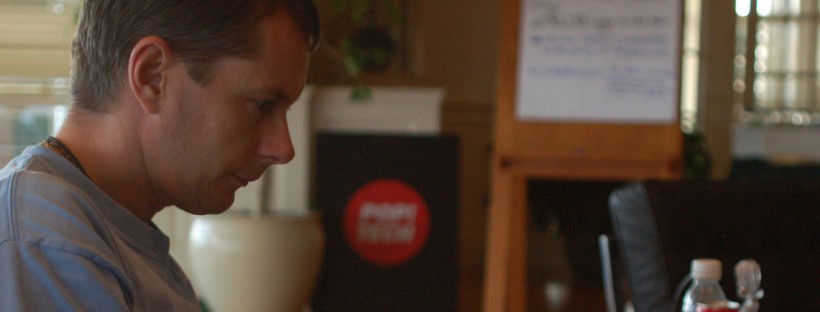If conventional wisdom were anything to go by, this is what might typically happen to a social entrepreneur with an idea:
Said entrepreneur comes up with an idea. Entrepreneur puts together a sample budget and an early-stage business model. Funding is sought for a pilot or prototype. Said pilot runs and impact/results are measured. If the signs are good, entrepreneur goes back to his or her donor, seeks increased funding, then scales. Said project becomes financially sustainable (or not) during the new funding period. Based on proven impact, sustainability and/or long term investor interest, said project either remains and grows or joins others in the giant “failed business ideas” graveyard in the sky.
Although this approach may be fine in the wider world of social entrepreneurship, it begins to struggle whenever there’s a strong ICT4D component, or where the individuals with the ideas aren’t social entrepreneurs at all but technologists or development workers out in the field. Despite making little sense applying the same model to both scenarios, this is precisely what often happens. Welcome to the world of “one size fits all”.

The realities of innovation in ICT4D are often very different to those elsewhere. For a start, the best ideas are not necessarily seeded in a lab, or a business school, or the global headquarters of a large international company. Workers on the front lines of conservation, human rights, disaster response or agricultural development often have to adapt and innovate based on the realities of their experiences in the field. Ideas that end up “sticking” don’t benefit from the process and order of the conventional “social entrepreneurship” approach. Business models and impact metrics all come a distant second to developing an appropriate solution to a very real problem, whatever and wherever that may be.
In reality, this may be a more sensible way of going about things. Only people who show initiative – and ideas which show promise – rise to the surface, and only then do others put time and money into figuring out how to best build on them. But as if there weren’t enough to do, inflicting foreign entrepreneurship models on a technology innovation which is at best a bad fit simply adds to the confusion. It’s time we recognised that adopting an approach based on “scale, sustainability and impact” doesn’t always make sense. One size doesn’t fit all, and ICT4D warrants a new approach.
I’ve spent a lot of time over the past few weeks thinking about this. Despite the promise, there are still far more mobile pilots than fully fledged, long term projects. Far more failed and lost projects than successful, ongoing ones. And too many people assessing success or failure based on potentially flawed, misleading or irrelevant metrics.
In short, we need to acknowledge three new (hard) realities in our field:
- Not all projects will have business models
- Not all projects will be financially sustainable
- Not all projects will be able to measure impact

So, where does this leave us? Well, we can at least acknowledge that applying conventional entrepreneurship models to mobile-for-development might be decreasing rather than increasing our chances of success. That financial sustainability may or may not be possible. And that figuring out precise impact may or may not be realistic or achievable. “Failure” on these fronts does not make a bad project. If it did then there’s a very large number of bad projects out there.
For me, this “ongoing failure” more likely indicates a flawed model, and a bad way of measuring success. We need a new model, and one of our own. Because – as the advert reminds us – we’re worth it…




